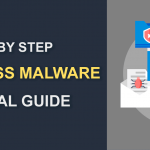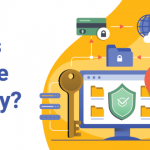What is Web Security? – Best Website Security Tools
August 29, 2022 | By Admin

What is Web Security?
Web Security also known as Cyber Security relates to the securing of websites and servers from online risks. It is aimed at safeguarding sensitive data by restricting, discovering and responding to attacks. The website security check involves scanning URLs for potential vulnerabilities and malware through website security software.A web security check or internet security check informs the user of online risks and advises solutions to address them. The first step to ensuring safety is by preventing and recognizing the risks. On the other hand, it is equally important in knowing about Hackers, Hacking, Worms, Viruses, Trojans, Spyware, Adware, Rootkits, etc., which can attack and damage, disable, or disrupt host computers and networks.
Malware virus threats are highly infectious and are capable enough to corrupt your data and damage your network and web security. Malware viruses silently trespass your system and execute lots of malicious activities that make your website and network non-responsive.
What is Web Application Security Tools?
Cyber Security Tool Definition: A website security tool scans websites at periodic intervals to find out if there is any questionable activity. When suspicious activity is tracked, the website security tools immediately bring it to the notice of security experts. Besides that, the key persons in the organization also receive an alert. In simple, the website security tools aid in identifying, and removing malware that is trying to affect or already lying unnoticed on the business website.
7 Common Web Application Security Tools
- Organization
- Scanning / Pentesting
- Runtime Application Self-Protection
- Development
- Usability
- Big Data
- DevOps
1. Organization
#OWASP The worldwide not-for-profit charitable organization Open Web Application Security Project (OWASP) is focused on improving the security of software.#ironbee Yet another open-source software. It helps in building universal Web Application Security Tools. The reputable software has a framework for developing a system for securing web applications.
#ModSecurity The toolkit aids in the real-time web application in logging, monitoring, and access control.
#NAXSI The high performance, low rules maintenance WAF for NGINX, NAXSI means Nginx Anti XSS & SQL Injection. NAXSI is open-source.
2. Scanning / Pentesting
#sqlmap: Being an open-source penetration testing tool, the sqlmap automates the process of detecting and exploiting SQL injection flaws and taking over database servers.#OWASP Testing Checklist v4: The OWASP Testing Checklist v4 is a more capable tool to test a web vulnerability assessment.
#ZAP: It is simple to use combined Web Application Security Tools for finding vulnerabilities in web applications. The Zed Attack Proxy (ZAP) is designed for experts who have hands-on in using a wide range of security tools. Notably, it is ideal for developers and functional testers who are new to penetration testing.
#w3af: The aim is to create a framework to help you secure your web applications by finding and exploiting all web application vulnerabilities. It is a Web Application Attack and Audit Framework.
#PTF: The Penetration Testers Framework (PTF) is a way for modular support for up-to-date tools.
#Infection Monkey: A semi-automatic pen-testing tool for mapping/pen-testing networks. Resembles a human attacker.
3. Runtime Application Self-Protection
#Sqreen: Sqreen is a Runtime Application Self-Protection (RASP) solution. The in-app agent instruments and monitors the app. Unauthorized user activities are reported and attacks are blocked without traffic redirection.4. Development
#OAuth 2 in Action: Know how to use and deployment of OAuth 2 from the perspectives of a client, an authorization server, and a resource server.#Securing DevOps: Know how the techniques of DevOps and Security should be applied together to make cloud services safer.
#Secure by Design: Know about the design patterns and coding styles that make lots of security vulnerabilities less expected.
#Understanding API Security: Know how the APIs are put together and how the OAuth protocol can be used to protect them.
5. Usability
#Usable Security Course: It is very useful for people who want to understand how security and usability converge.6. Big Data
#data_hacking: Examples of using Pandas, Scikit, and IPython. Know how to bet on security data.#hadoop-pcap: Read about packet capture (PCAP) files from the Hadoop library.
#Workbench: The python framework helps in security research and development teams.
#OpenSOC: OpenSOC combines numerous open-source big data technologies to offer a centralized tool for security monitoring.
#Apache Metron: Apache Metron combines numerous open-source big data technologies for security monitoring and analysis.
#Apache Spot: The open-source software aids in providing insights from flow and packet analysis.
#binarypig: It is a scalable Binary Data Extraction in Hadoop.
7. DevOps
#Securing DevOps: Know the Security techniques for DevOps that examine best practices used in securing web applications and their infrastructure. Related Resource
Related ResourceWebsite Safety Check
WordPress Security
Website Status
Website Checker
Check Website Safety
Cheap Content Delivery Network
Best CDN Providers
Pay as You Go CDN
CDN
Free CDN
Website Malware Scanner
Free Website Hosting
DDoS Protection
Hacker Protection
How to Identify a Safe Website
Web Security Check
DDoS Attack Protection
Vulnerability Scanner

 (33 votes, average: 4.30 out of 5, rated)
(33 votes, average: 4.30 out of 5, rated)








